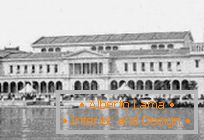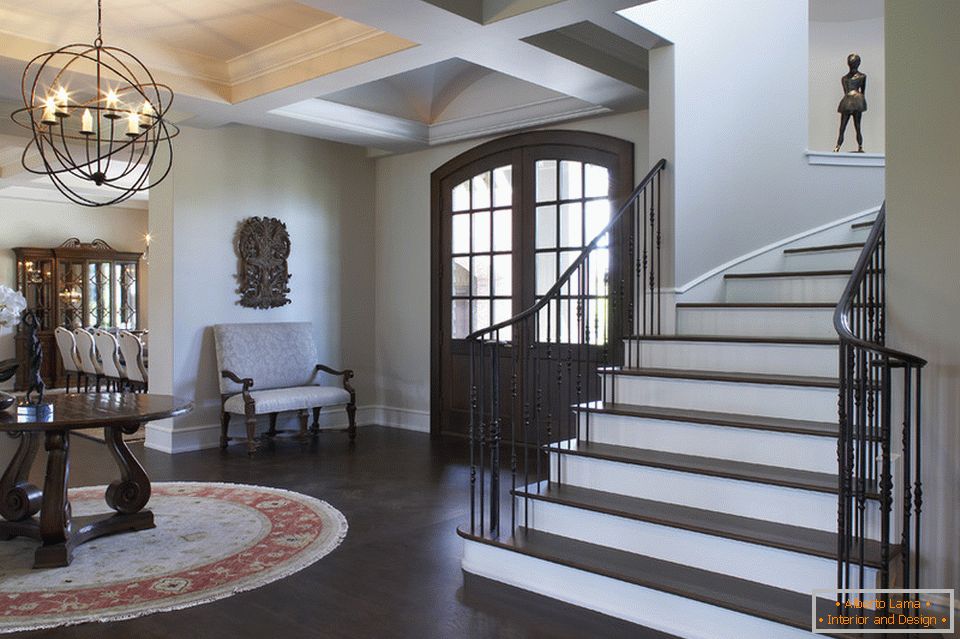A year has passed since the information about the project of the new Al Wakra stadium in the capital of Qatar, Doha, was published for the authorship of architect Zaha Hadid. And since then, this project seems to be constantly appearing in the news. For example, most recently in the press there were comments Khadid in connection with the death of workers who participated in the construction, working conditions at which left much to be desired. These comments caused a storm in the media of such magnitude that it came to legal interference. The Hadid stadium project is universally criticized for being too "anatomical", not to mention the fact that the very fact of holding the World Cup 2022 in Qatar, for which the stadium is being built, was met quite controversially.

- 9. Portland Building (Portland, USA). Architect - Michael Graves
- 8. Temple of the Holy Family (Barcelona, Spain). Architect - Antonio Gaudi
- 7. The tower "Antiliya" (Mumbai, India). Архитекторская компания Perkins&Will, Дизайнерская компания Hirsch Bedner Associates
- 6. The building of the women's section of the World Columbia Exposition (Chicago, USA). Architect - Sofia Hayden Bennett
- 5. Skyscraper "Walkie-Toki" (London, Great Britain). Architectural workshop of Raphael Vignoli
- 4. The Eiffel Tower (Paris, France). Architect - Gustave Eiffel
- 3. Sydney Opera House (Sydney, Australia). Architect - Jorn Utzon
- 2. Stage "Al-Vakra" (Doha, Qatar). Architecture company Zaha Hadid
- 1. Residential complex "Pruitt-Aigou" (St. Louis, USA). Architect - Minoru Yamasaki
Criticism of Al-Wakra made us turn our eyes to other buildings in different parts of the world, which aroused a lot of discussions at one time. Can Al-Wakra become the most controversial structure in history? Find out by reading our article on nine facilities that can make Al Wakra worthy of competition.
9. Portland Building (Portland, USA). Architect - Michael Graves
"The idea of demolishing a building is akin to killing a child ... I do not know how to relate to it," said architect Michael Graves during a recent discussion about the future of the Portland Building, the first postmodern building in North America. This building has for decades been the theme of the most irreconcilable debate about the feasibility and usefulness of postmodernism in the context of functionality. The Portland Building, which was commissioned by the City of Portland and intended to house municipal services, was devastated by the semiclassical design "the more the better" and the closed interior layout.
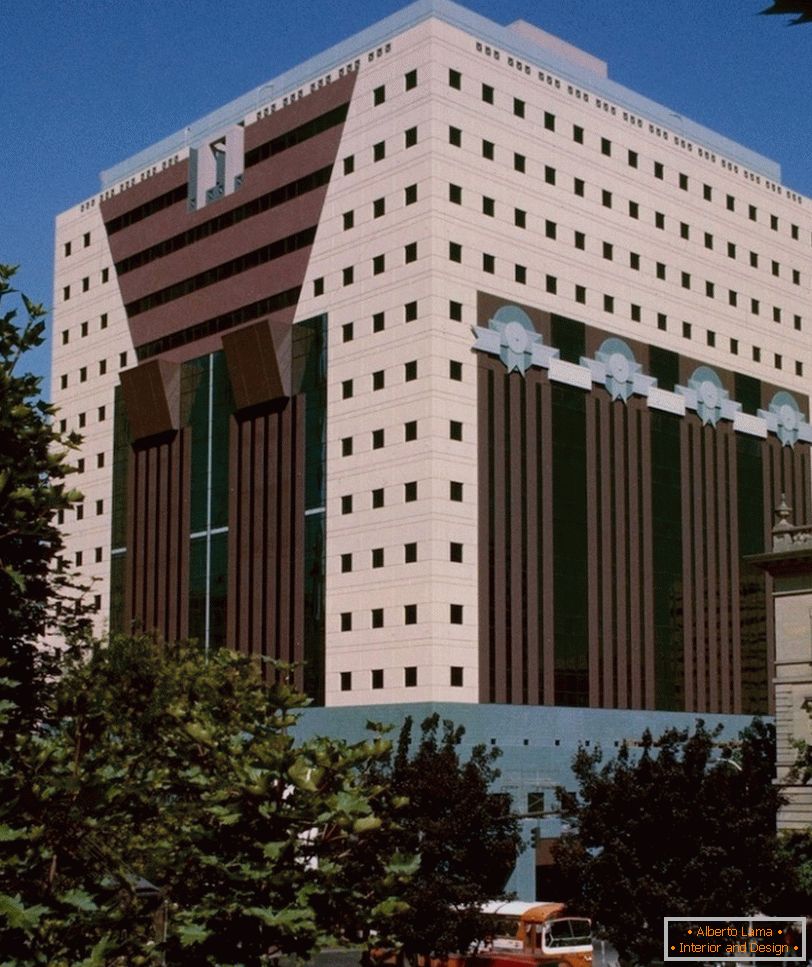
This building, designed by the architect Michael Graves, a member of the architectural group "New York Five", was supposed to glorify the people of Portland, but instead it infuriated them. Working within a meager budget and exorbitant program requirements, Graves created a building with giant red columns alternating with darkened windows and decorated here and there with decorative ribbons reminiscent of beauty contests. It was said that Graves won the competition for the position of project manager due to the fact that his price for the project was lower than the budget, and also that he agreed to the city administration's demand to provide for the project a lot of small windows throughout the building's facade. Thirty-two years later, the building is in dire need of repair, for which $ 95 million and two years of work will go away. The city administration is still thinking about the future of the Portland Building.
8. Temple of the Holy Family (Barcelona, Spain). Architect - Antonio Gaudi
"My clients are in no hurry" - the famous phrase spoken by the Spanish architect Antonio Gaudi, when he talked about his work on the project of the cult Roman Catholic basilica in Barcelona, called the Sagrada Familia. This church is the most protracted construction project in the world, which is 132 years old. It is fully funded through personal donations, and at the end of it, it costs 25 million euros (31, 3 million dollars) annually. The construction of the church began in 1882, but suddenly stopped in 1926, after Gaudi was killed, shot down by a tram in the center of Barcelona. His death gave rise to a lot of ethical questions about whether to finish the project. Almost 100 years after the death of Gaudi, architects worked on copies of the original plans of the project, even though the drawings were completely destroyed at the beginning of the Spanish Civil War.
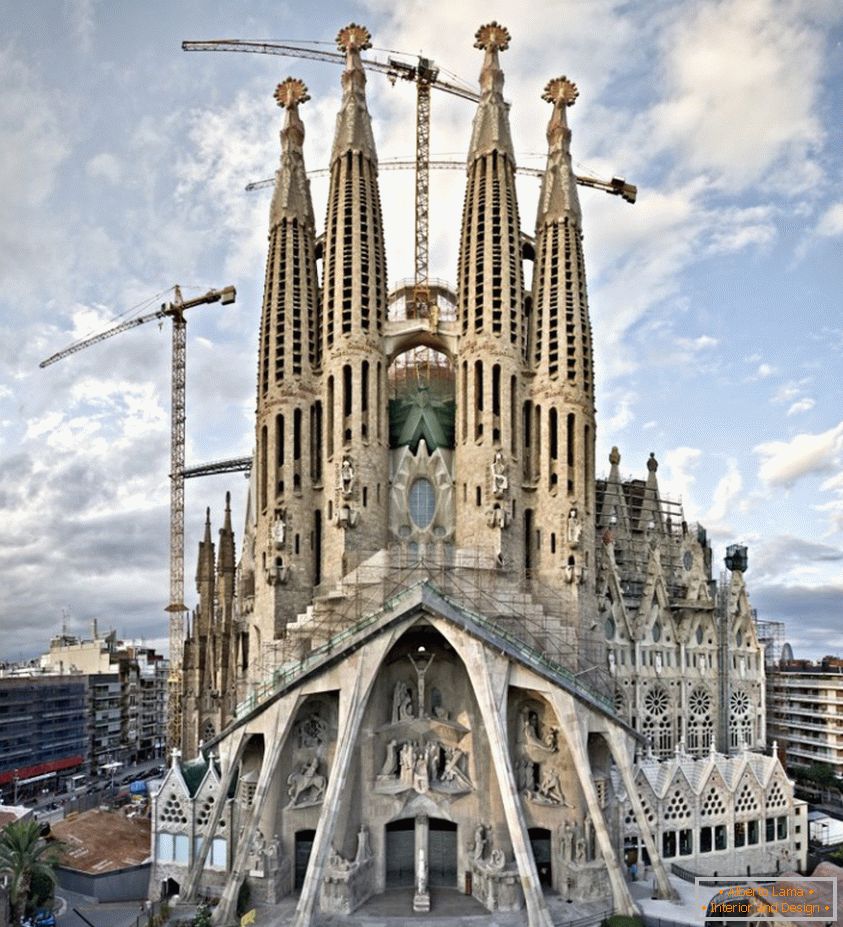
Since the 60s of the XX century. Many eminent architects, including Le Corbusier and Alvar Aalto, launched unsuccessful campaigns to modernize Gaudi's plans, suggesting that his work has become obsolete and has lost importance. Now the architects working on the project plan to finish it in 2026, 100 years after the death of Gaudi and 144 years from the date of the construction of the church.
7. The tower "Antiliya" (Mumbai, India). Архитекторская компания Perkins&Will, Дизайнерская компания Hirsch Bedner Associates
Построенная рядом с трущобами Голибар в самом центре Мумбаи, эта 27-этажная башня — дом для одной-единственной семьи, обладающий титулом самого дорогого частного жилища в мире (оно обошлось заказчикам в рекордную сумму: 1$ млрд.) Владелец здания — пятый в списке самых богатых людей мира, Мукеш Амбани. Здание было спроектировано американкой архитектурной компанией Perkins&Will в сотрудничестве с американской же компанией Hirsch Bedner Associates, занимавшейся проектированием отелей Mandarin Oriental по всему миру. Каждый этаж здания отделан редкими, роскошными материалами, лично подобранными госпожой Амбани.

The project received a lot of disapproval from the residents of Mumbai who believe that the tower is a monument of insensitivity and excesses, which is very mildly said, given that the house has a six-story garage, 9 personal elevators and more than 37,000 meters 2 personal family living space.
6. The building of the women's section of the World Columbia Exposition (Chicago, USA). Architect - Sofia Hayden Bennett
Critics and the administration of the international Colombian exhibition in Chicago, who opposed the "female" architectural design, called the building of the women's section of the exhibition "timid," "fragile" and "modest." The building, which was opened in 1893, was dedicated to the successes of women in the arts and crafts, but it was recognized as not fitting the exhibition theme by an organizing committee headed by Daniel Burnham. Despite numerous complaints, the project was implemented, under the leadership of Sofia Hayden Bennett, the first female graduate of the Massachusetts Institute of Technology.

The building was criticized for too modest "feminine" aesthetics in comparison with luxuriously decorated nearby buildings designed by male architects. Under the patronage of the management board, consisting exclusively of female guardians and craftsmen, the building became the central milestone in an irreconcilable dispute about the need for a place entirely dedicated to the work of women and the contribution of women to architecture.
5. Skyscraper "Walkie-Toki" (London, Great Britain). Architectural workshop of Raphael Vignoli
Many residents of London could find the address "Fenchurch Street, House 20" completely unremarkable among the numerous streets of central London. Could, if not for the building under the name of "Walkie-Toki", which constantly generates heated debates about the general discontent with the unusual (read: disgusting) design of the building. The structure with curved lines expands upward, resembling an air ball that is about to burst. Located on the north bank of the Thames and away from a group of other skyscrapers in the City's London area, Woki-Toki gained fame in the press after a series of incidents caused by the unfortunate feature of a skyscraper: it causes irreparable damage to the ground object by its "laser beam of death" (that is, reflected by the sunlight from the glass surface of the building).
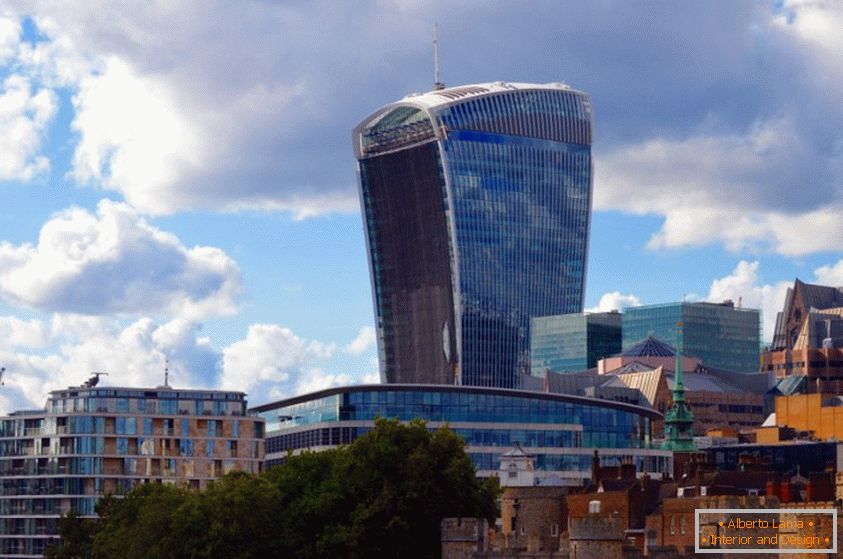
The building was nicknamed the "Wokie-Burner" after a series of accidents involving the unsuccessfully parked Jaguar with molten outer panels, the smoked facade of the store and the burnt carpet, the many destroyed bicycle seats and the huge number of experiments with hot eggs in the sun at temperatures above 100 ° C. Paul Finch, an ardent supporter of the Walkie-Toki project at the planning stage, later publicly announced that he regretted participating in the project, noting that the builders "made from him the devil knows what, and are the architects of their own failures."
4. The Eiffel Tower (Paris, France). Architect - Gustave Eiffel
"This is the only place in Paris where I can dine without seeing this ugly tower," the Parisian writer Guy de Maupassant once said at the end of the 1880s, speaking of a cafe at the foot of the newly constructed Eiffel Tower. The unfortunate tower became the object of a whole avalanche of criticism from the Parisians who declared that the tower would hopelessly spoil the elegant landscape of the city with its low buildings, planned in the XIX century. Baron Osman. Widespread "anti-tower" campaigns threw the districts of the city with leaflets, calling the Eiffel Tower "a giant black chimney" and "a really tragic street lamp." On the satirical drawings of that time, Gustave Eiffel's head adorned the top of the tower as an embodiment of the error made by the Parisian city administration. Nevertheless, since the opening in 1889, the Eiffel Tower was visited by almost 250 million people.

3. Sydney Opera House (Sydney, Australia). Architect - Jorn Utzon
It was a story of anger, dismissal, rejection, scandal, embezzlement and everything that accompanied it. In 1957, Jorn Utzon from Denmark was selected from 232 applicants for the management of the project for the construction of an opera house in Sydney. At first his project was rejected by the selection committee of the competition, but one of the jury members, the Finnish architect Eero Saarinen, drew attention to him. The construction of the project was allotted only 18 million Australian dollars, he was obliged to fulfill within a year and a half, but hardly started the project was slow and with difficulties. Cranes for the construction of an unusual roof were made by special order in France, and then sent to Australia. In 1966, almost 10 years after the start of the project, the newly elected leadership of New South Wales felt that the cost of the project was too high, and its progress was too slow because of Uthzon's insatiable perfectionism. Utzon was excluded from the project management by the new director of public works, Davis Hughes, who stopped the construction site, depriving Huizon of salaries and freezing the budget funds intended for building the theater.
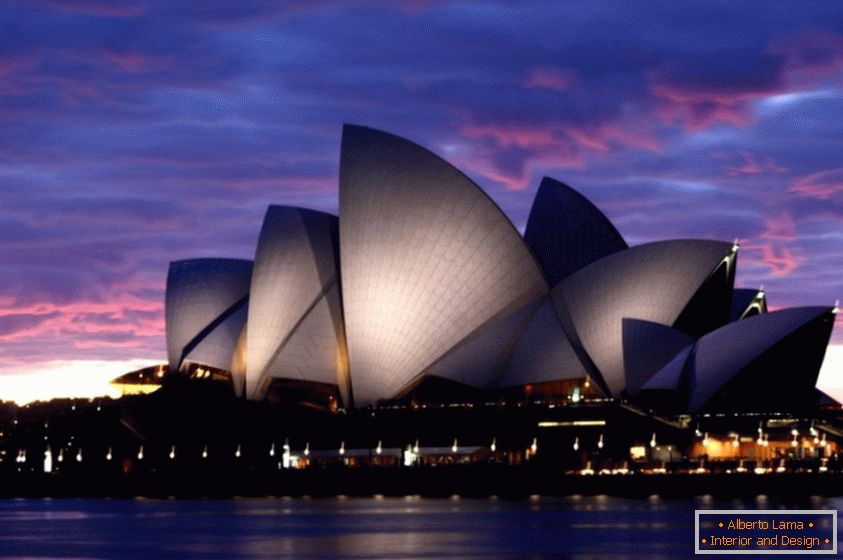
Australian architect Peter Hall replaced Huizon, and made significant changes to the original design plan. Under the leadership of Hall, the project cost rose to 102 million Australian dollars, and the opening of the theater was postponed for almost 10 years - the whole construction of the theater lasted 16 years. Utzon never attended the theater, but received an official apology from the management of the opera house in 1999.
2. Stage "Al-Vakra" (Doha, Qatar). Architecture company Zaha Hadid
The highly controversial work of Zaha Hadid on the construction of the Al-Wakra stadium in the capital of Qatar, Doha was subjected to numerous sarcastic attacks. This stadium is one of five stadiums being built for the World Cup in 2022. Initially, the design of the stadium and its appearance, reminiscent of the female genital organ, were criticized, but later there were other reasons for criticism - in particular, working conditions for migrant workers, involved in several serious projects related to the World Cup in Qatar. More than 1,000 workers, according to information, died during the construction of buildings for the championship, and when Zaho Hadid was asked if she would do anything to improve the working conditions, when the construction of her own project would begin, she said the famous phrase: "The need to monitor this is not part of my duties as an architect. "

The organization FIFA has promised to closely monitor the conditions of work in Qatar, but recently it was itself suspected when it was accused of corruption in the case of choosing Qatar as one of the venues for the World Cup. This allowed us to assume that the right to host the World Cup matches will be taken from Qatar and transferred to another country, including because of the numerous problems associated with the extremely high temperatures prevailing in Qatar in the summer. But, despite criticism from officials, outside observers and famous architects, Zaha Hadid's project to build a stadium in Doha is moving forward.
1. Residential complex "Pruitt-Aigou" (St. Louis, USA). Architect - Minoru Yamasaki
Residential complex "Pruitt-Aigou", called one of the tenants "hell on earth" - the most notorious failure project in the history of construction of public housing. This project was one of the largest in the US during its operation in 1954-1972, but was never completely populated because of widespread racist sentiments. Disegregation (the repeal of the law on the separation of black and white Americans) of public housing led to the fact that the majority of the white residents left their apartments in 1956.
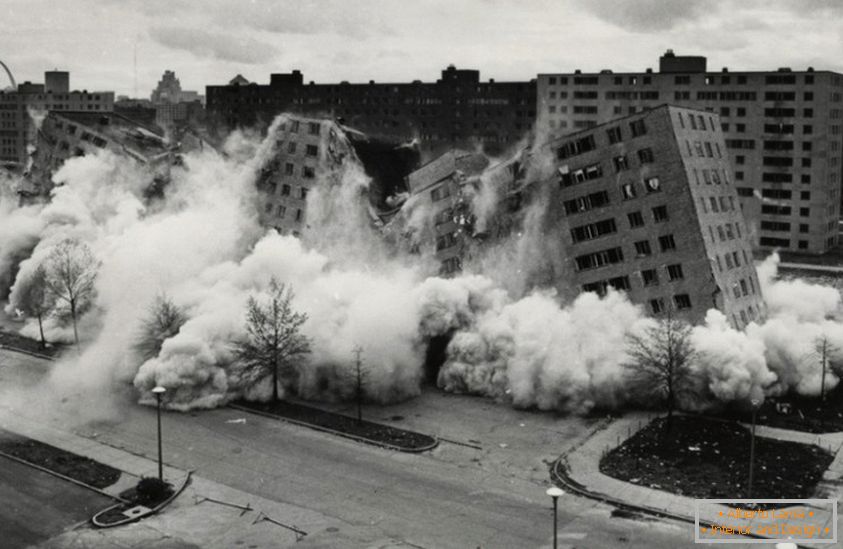
Contemporary critics blamed the Pruitt-Aigou project, which, in their opinion, was like a prison from the very beginning, because of which its poor residents experienced mental health problems. Almost 20 years later, the project was declared unfit for habitation, released from tenants and demolished as quickly as the St. Louis municipal government could afford. However, since the demolition, these recent studies have repeatedly been criticized for lack of study of the issue - many noted that the statistics were distorted in favor of racist views. The demolition of the Pruitt-Aigou residential complex was declared a "death of modern architecture" by Charles Jenks, and the complex itself became a textbook example of what should be avoided in the design of urban buildings. Often this residential complex is called the "beginning of the end" of mass housing construction in St. Louis.
Do you agree with this list of the most controversial buildings? Tell us about your opinion in the comments.
Photogallery Total | 10 pictures







